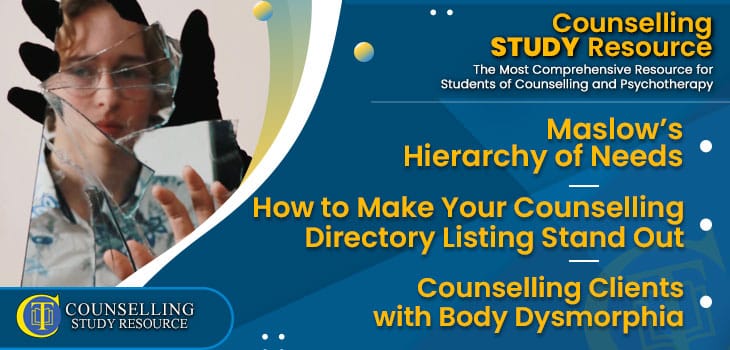See Counselling Skills Used in Real Sessions by Qualified Therapist
Real Sessions – Real Presentations – Real Skills
Gain the competence and confidence to use counselling techniques effectively!

In Episode 240 of the Counselling Tutor Podcast, your hosts Rory Lees-Oakes and Ken Kelly are back with this week’s three topics:
Abraham Maslow: History & Overview
Maslow’s hierarchy of needs can be a key feature in thinking about how to work with a client, the main things to think about when putting this theory into practice are:

Real Sessions – Real Presentations – Real Skills
Gain the competence and confidence to use counselling techniques effectively!
Following on from last week’s discussion on directories, Rory and Ken talk more about what you should think about when it comes to writing your listing.
The key points of this discussion are:

On-demand access to a rich lecture library covering theory, skills, and professional development for counselling students—Mapped to the UK awarding body criteria
“The Student Library has been BRILLIANT, I can’t recommend it enough!
It has been a lifeline in helping me prepare for practice and my first clients. If you’re considering it, go-for-it, it’s absolutely worth it!”
Kelly – Graduated and now in practice.
In this week’s ‘Practice Matters’, Rory speaks with Amy Launder about working with body dysmorphia in the therapy room.
The key points of this discussion include:
Abraham Maslow: History & Overview

Get on-demand Certified CPD that is implementable in your practice
